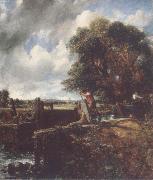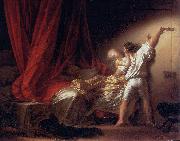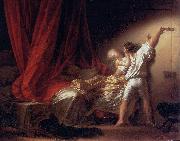Wholesale Oil Painting No Minimum |
|||||||||||
|
|
|||||||||||

|
|||||||||||
|
|
|
||||||||
John Constable1776-1837 British John Constable Locations 1837). English painter and draughtsman. His range and aspirations were less extensive than those of his contemporary J. M. W. Turner, but these two artists have traditionally been linked as the giants of early 19th-century British landscape painting and isolated from the many other artists practising landscape at a time when it was unprecedentedly popular. Constable has often been defined as the great naturalist and deliberately presented himself thus in his correspondence, although his stylistic variety indicates an instability in his perception of what constituted nature. He has also been characterized as having painted only the places he knew intimately, which other artists tended to pass by. While the exclusivity of Constable approach is indisputable, his concern with local scenery was not unique, being shared by the contemporary Norwich artists. By beginning to sketch in oil from nature seriously in 1808, he also conformed with the practice of artists such as Thomas Christopher Hofland (1777-1843), William Alfred Delamotte, Turner and, particularly, the pupils of John Linnell. Turner shared his commitment to establishing landscape as the equal of history painting, despite widespread disbelief in this notion. Nevertheless, although Constable was less singular than he might have liked people to believe, his single-mindedness in portraying so limited a range of sites was unique, and the brilliance of his oil sketching unprecedented, while none of his contemporaries was producing pictures resembling The Haywain (1821; London, N.G.) or the Leaping Horse (1825; London, RA). This very singularity was characteristic of British artists at a time when members of most occupations were stressing their individuality in the context of a rapidly developing capitalist economy |
||||||||
|
|
||||||||
The Lock
The Lock Painting ID:: 32986 |
mk82
1824
oil on canvas
142.2x120.7cm
mk82 1824 oil on canvas 142.2x120.7cm |
|||||||
|
|
||||||||
Jean-Honore FragonardFrench Rococo Era Painter, 1732-1806 was a French painter and printmaker whose late Rococo manner was distinguished by remarkable facility, exuberance, and hedonism. One of the most prolific artists active in the last decades of the Ancien Regime, Fragonard produced more than 550 paintings , of which only five are dated. Among his most popular works are genre paintings conveying an atmosphere of intimacy and veiled eroticism. He was born at Grasse, Alpes-Maritimes, the son of François Fragonard, a glover, and Françoise Petit. He was articled to a Paris notary when his father's circumstances became strained through unsuccessful speculations, but showed such talent and inclination for art that he was taken at the age of eighteen to François Boucher, who, recognizing the youth's rare gifts but disinclined to waste his time with one so inexperienced, sent him to Chardin's atelier. Fragonard studied for six months under the great luminist, then returned more fully equipped to Boucher, whose style he soon acquired so completely that the master entrusted him with the execution of replicas of his paintings. Though not yet a pupil of the Academy, Fragonard gained the Prix de Rome in 1752 with a painting of "Jeroboam Sacrificing to the Golden Calf", but before proceeding to Rome he continued to study for three years under Charles-Andre van Loo. In the year preceding his departure he painted the "Christ washing the Feet of the Apostles" now at Grasse cathedral. On September 17, 1756, he took up his abode at the French Academy in Rome, then presided over by Charles-Joseph Natoire. While at Rome, Fragonard contracted a friendship with a fellow painter, Hubert Robert. In 1760, they toured Italy together, executing numerous sketches of local scenery. It was in these romantic gardens, with their fountains, grottos, temples and terraces, that Fragonard conceived the dreams which he was subsequently to render in his art. He also learned to admire the masters of the Dutch and Flemish schools (Rubens, Hals, Rembrandt, Ruisdael), imitating their loose and vigorous brushstrokes. Added to this influence was the deep impression made upon his mind by the florid sumptuousness of Giovanni Battista Tiepolo, whose works he had an opportunity to study in Venice before he returned to Paris in 1761. In 1765 his "Coresus et Callirhoe" secured his admission to the Academy. It was made the subject of a pompous (though not wholly serious) eulogy by Diderot, and was bought by the king, who had it reproduced at the Gobelins factory. Hitherto Fragonard had hesitated between religious, classic and other subjects; but now the demand of the wealthy art patrons of Louis XV's pleasure-loving and licentious court turned him definitely towards those scenes of love and voluptuousness with which his name will ever be associated, and which are only made acceptable by the tender beauty of his color and the virtuosity of his facile brushwork; |
||||||||
|
|
||||||||
The lock
The lock Painting ID:: 85105 |
71 x 92 cm (28 x 36.2 in)
ca. 1776-79
Oil on canvas
cjr 71 x 92 cm (28 x 36.2 in) ca. 1776-79 Oil on canvas cjr |
|||||||
|
|
||||||||
Jean Honore Fragonard1732-1806 French Jean Honore Fragonard Locations French painter. He studied with François Boucher in Paris c. 1749. He subsequently won a Prix de Rome, and while in Italy (1756 ?C 61) he traveled extensively and executed many sketches of the countryside, especially the gardens at the Villa d Este at Tivoli, and developed a great admiration for the work of Giovanni Battista Tiepolo. In 1765 his large historical painting Coresus Sacrifices Himself to Save Callirhoë was purchased for Louis XV and won Fragonard election to the French Royal Academy. He soon abandoned this style to concentrate on landscapes in the manner of Jacob van Ruisdael, portraits, and the decorative, erotic outdoor party scenes for which he became famous (e.g., The Swing, c. 1766). The gentle hedonism of such party scenes epitomized the Rococo style. Although the greater part of his active life was passed during the Neoclassical period, he continued to paint in a Rococo idiom until shortly before the French Revolution, when he lost his patrons and livelihood. |
||||||||
|
|
||||||||
The lock
The lock Painting ID:: 89469 |
Oil on canvas
Français : huile sur toile
Dimensions 71 x 92 cm (28 x 36.2 in)
cyf Oil on canvas Français : huile sur toile Dimensions 71 x 92 cm (28 x 36.2 in) cyf |
|||||||
|
|
||||||||
|
Jean Honore Fragonard 1732-1806 French Jean Honore Fragonard Locations French painter. He studied with François Boucher in Paris c. 1749. He subsequently won a Prix de Rome, and while in Italy (1756 ?C 61) he traveled extensively and executed many sketches of the countryside, especially the gardens at the Villa d Este at Tivoli, and developed a great admiration for the work of Giovanni Battista Tiepolo. In 1765 his large historical painting Coresus Sacrifices Himself to Save Callirhoë was purchased for Louis XV and won Fragonard election to the French Royal Academy. He soon abandoned this style to concentrate on landscapes in the manner of Jacob van Ruisdael, portraits, and the decorative, erotic outdoor party scenes for which he became famous (e.g., The Swing, c. 1766). The gentle hedonism of such party scenes epitomized the Rococo style. Although the greater part of his active life was passed during the Neoclassical period, he continued to paint in a Rococo idiom until shortly before the French Revolution, when he lost his patrons and livelihood. The lock Oil on canvas Français : huile sur toile Dimensions 71 x 92 cm (28 x 36.2 in) cyf |
||||||||
|
|
||||||||
|
Prev Next
|
||||||||
|
|
||||||||
|
Related Paintings to Jean Honore Fragonard :. |
||||||||
|
|
||||||||
|
CONTACT US |



